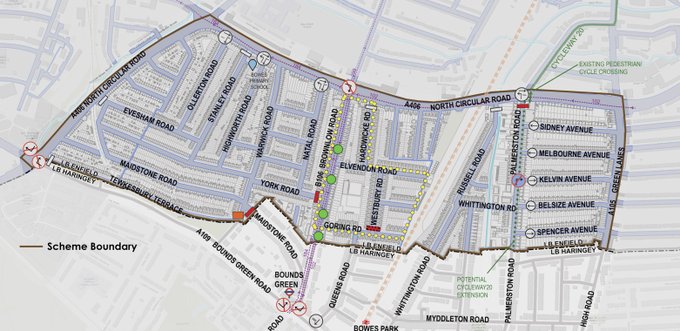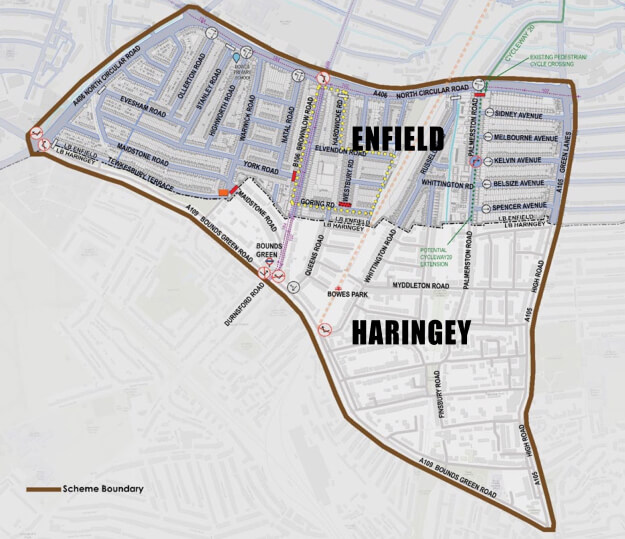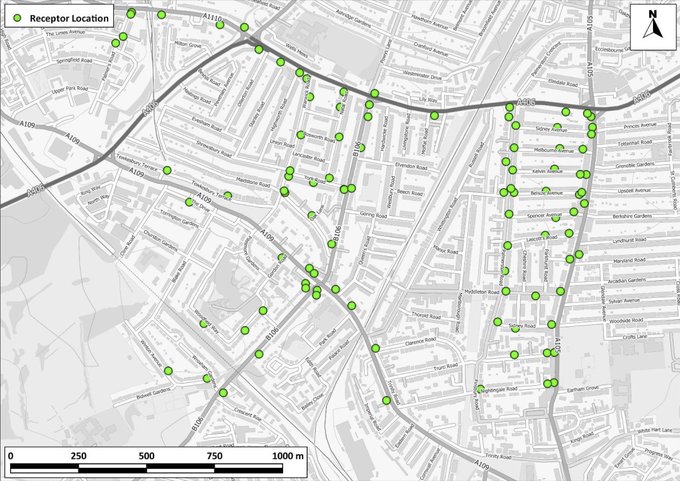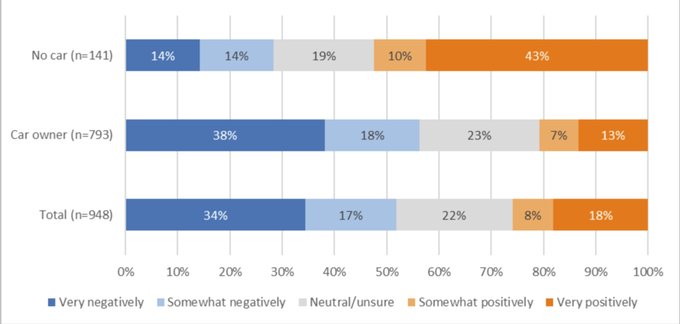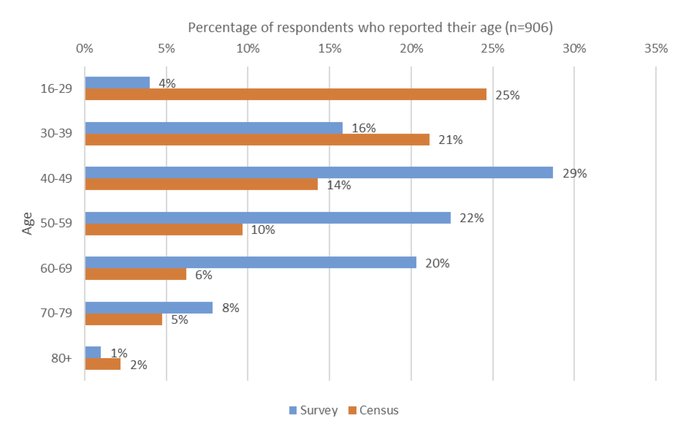At its meeting on 16th June Enfield's cabinet agreed to continue the trial of a low-traffic neighbourhood scheme in the Bowes Primary Quieter Neighbourhood. Extending the trial will allow collection of traffic data that is more representative of "normal" conditions. The council will also be working with Haringey Council to explore a possible alternative design which includes streets in both boroughs, potentially incorporating a "bus gate" to prevent drivers using Brownlow Road as a through route.
The cabinet was presented with an interim report on the scheme and invited to agree the immediate next steps:
That Cabinet agrees that:
- The Bowes Primary Quieter Neighbourhood trial continues, enabling the opportunity to collect traffic data that is more representative of ‘normal’ conditions. A pathway to this return is identified by the Governments published roadmap to easing lockdown restrictions.
- Following collaborative working with Haringey and full assessment of community feedback received to date, further engagement takes places on any alternative design that is developed. This engagement will occur alongside the ongoing assessment of the existing trial.
The report points out that subsequent to the start of the Bowes trial Haringey Council has obtained funding for a scheme which adjoins the Bowes LTN:
Therefore, there is an opportunity to explore the potential for an alternative design that could provide a more optimal solution for both Enfield and Haringey. Feedback gathered during the previous consultation phases will directly inform the development of these designs. The bus gate proposals for Brownlow Road will continue to be considered as part of this ongoing design development.
Collecting feedback on an alternative design, whilst concurrently collecting more data on the existing trial, will enable an informed decision to be taken on the future of this project. Consequently, a further decision report will follow for this project, anticipated later in the Autumn/Winter of 2021.
The report summarises interim data relating to:
- traffic speed and volume
- bus journey times
- cycling counts
- pedestrian counts
- impact on emergency services
- residents', businesses' and stakeholders' views
- equality considerations
- crime and anti-social behaviour
- noise
- air quality
- road collisions.
The data is presented in more detail in the annexes and appendices.
Report on Bowes Primary Quieter Neighbourhood prepared for Enfield cabinet, June 2021
- PL 20.151 C, item 6. PDF 237 KB
- Annex 1. Map of interventions, item 6. PDF 12 MB
- Annex 2. Automatic Traffic Count Locations, item 6. PDF 6 KB
- Annex 3. Consultation Insights, item 6. PDF 103 KB
- Appendix 1. Bowes Primary Area QN - Monitoring and Evaluation Plan, item 6. PDF 2 MB
- Appendix 2. DfT Letter Active Travel Emergency Fund, item 6. PDF 211 KB
- Appendix 3. Bowes Primary Area QN Consultation Analysis May 2021, item 6. PDF 4 MB
- Appendix 4. Bowes Primary Area QN Monitoring - TfL Network Performance Delivery, item 6. PDF 119 KB
- Appendix 5. Bowes Primary Area QN EqIA June 2021, item 6. PDF 1 MB
- Appendix 6. Air Quality Assessment Bowes Primary Area QN May 2021, item 6. PDF 6 MB
- Appendix 7. Noise Assessment Bowes Primary Area QN June 2021, item 6. PDF 3 MB
In a series of tweets, deputy council leader Ian Barnes presented a summary of the report and the interim data:
Twitter thread posted by Cllr Ian Barnes on 8th June
An interim report concerning the Bowes LTN has been released today in the June 16th Cabinet papers.
The air quality, noise and TfL monitoring are all promising… but these results contain caveats due to ‘abnormal’ conditions on our roads due to Covid.
(1/24)
And these caveats mean that we are asking Cabinet to agree to extend the LTN trial, enabling us to collect more traffic data under ‘normal’ conditions.
A pathway to this return to ‘normal’ conditions is identified by the Government’s ‘roadmap to ease restrictions’.
(2/24)
Around 5% of the local population took part in the consultation (thank you!) – in challenging times we leafleted, used social media, met local community groups and hosted a webinar, but even this percentage has provided a large amount of data to analyse and absorb.
(3/24)
This Cabinet report does NOT ask for a final decision to be made about the LTN... it simply requests agreement that the trial continues to enable a full assessment of the project in the subsequent final report.
(4/24)
We continue to collaborate w/ Haringey & we’re fully assessing community feedback. We may investigate amending our design in line with Haringey’s future design. They’ll be further engagement on any alternative design alongside the ongoing assessment of the existing trial
(5/24)
Some report insights follow, and it's important to remember that Haringey’s potential LTN trial will lead to a more comprehensive LTN which will complete the entire ‘cell’ as you can see on the map below 👇
(6/24)
Residents’ fears of air quality worsening appear to be unfounded: 105 out of 107 locations in the area resulted in ‘negligible’ increases/decreases in air quality following the LTN installation.
(7/24)
With the remaining two locations, there is uncertainty regarding one ‘moderate adverse impact’ (see p269 Cabinet Report) and Haringey’s LTN should help the other ‘slight adverse’.
(8/24)
Traffic counts are lower than the 2019 baseline on many roads, but again with caveats.
Plus Haringey’s LTN will complete the entire, overarching LTN cell for the ladder roads south of the North Circular and west of Green Lanes some of which saw an increase.
(9/24)
AQ Overall: “There are many uncertainties around the predictions presented in the AQ report… it is challenging to isolate those changes to traffic flows caused by the scheme from those caused by… restrictions to control the COVID-19 pandemic”
Hence our Cabinet request.
(10/24)
Noise Assessment: The LTN has led to moderate/major decreases in noise levels along two roads, as well as moderate increases on four roads… these should be addressed by Haringey’s LTN cell completion.
(11/24)
TfL Bus Monitoring:
“Overall bus performance around the LTN has shown very few patterns, which means bus performance is not consistently better or worse, and the impacts could therefore be described as neutral…”
(12/24)
TfL Bus Monitoring cont:
“…we are constantly reviewing any changes that could be associated with the scheme”
(13/24)
TfL North Circular Monitoring:
“The section of the A406 around the LTN has historically been very congested in pre-pandemic conditions, however no significant concerns about additional disruption have been raised from the Control Centre.”
(14/24)
TfL Conclusions:
“A constant theme in the monitoring undertaken for this scheme is that the variations in network performance have typically aligned with lockdown restrictions,rather than the LTN. It has therefore been challenging to see the impacts of the LTN alone...
(15/24)
TfL Conclusions cont:
"Nevertheless, the LTN does not appear to have had a prolonged impact on the network in the regular monitoring undertaken by TfL.”
(16/24)
The Consultation:
The voices of car owners and older residents dominate the consultation.
86% of responses were from car owners, while only 52% of households own a car in the area.
(17/24)
53% of respondents who do not own a car see the scheme as positive whereas only 20% of car owners feel the same way.
(18/24)
Also a greater proportion of residents without a car felt the scheme is ‘very effective’ than ‘not at all effective’.
This was the case for reducing vehicle speeds, reducing vehicle volume, enabling more walking and cycling and creating a general feeling of safety’.
(19/24)
With regards to age, the over-forties represent 80% of the consultation whilst only representing 37% of the area.
We will target upcoming engagement activities towards the younger residents whose future is threatened by climate change and pollution.
(20/24)
With regards to north-south access
66% consider driving north out of the scheme important
73% consider driving south as important
72% consider access in and out of area to A406 as important
81% consider access in and out of the area to Bounds Green Road as important
(21/24)
Of the 98 respondents who consider themselves to have a disability… 75 of them perceive the LTN impact as negative… while 15 are positive.
We await a dedicated report based on this group… and we’ll shortly run focus groups to fully investigate these perceived issues.
(22/24)
The above is a fraction of the data we’ve collected, and just to repeat that the decision to be made at Cabinet is whether to extend the tr ial to allow for more ‘normal’ traffic data collection.
(23/24)
We also await further details on Haringey’s own LTN designs adjoining the Bowes LTN.
More report details in the agenda reports pack 👇 …
(24/24)
